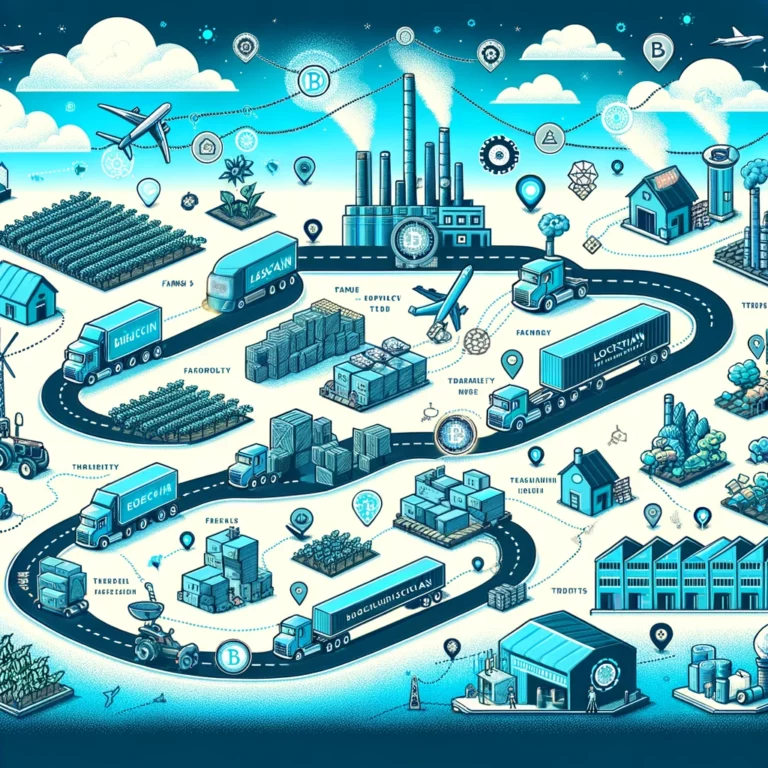How Blockchain is Changing the Landscape of Data Security
Blockchain is revolutionizing data security by providing decentralized, tamper-proof storage. It eliminates single points of failure, enhancing data integrity.
Blockchain technology offers a new way to secure data, ensuring transparency and trust. Traditional data storage methods are prone to hacking and unauthorized access. Blockchain’s decentralized nature distributes data across multiple nodes, making it difficult for hackers to compromise the system.
Each transaction is encrypted and linked to the previous one, forming a chain that is immutable. This ensures that data remains unchanged and secure. Industries such as finance, healthcare, and supply chain are adopting blockchain for its robust security features. By leveraging blockchain, organizations can protect sensitive information and maintain high levels of data integrity.
Introduction To Blockchain
Blockchain is a digital ledger. It records transactions across many computers. This system is very secure. Data is stored in blocks. Each block is linked to the previous one. This makes it hard to change the data. The system is decentralized. No single person controls it. This ensures transparency and trust.
Blockchain started with Bitcoin in 2008. The idea was to make secure digital money. People saw its potential. They found many uses for it. Now, many industries use blockchain. It helps in finance, healthcare, and supply chains. The technology keeps evolving. It keeps getting better and more secure.
Core Principles
Blockchain uses a decentralized network. No single entity controls the data. This makes it harder for hackers to attack. Each participant has a copy of the data.
Changes need agreement from the network. This ensures data integrity and security. Decentralization helps in reducing single points of failure.
All transactions are visible to participants. This builds trust within the network. Every action is recorded and auditable. Transparency ensures accountability.
Users can see the history of transactions. This makes it easy to track any changes. Transparency helps in preventing fraud.
Once data is added to the blockchain, it cannot be changed. This is called immutability. It prevents tampering of data.
Every block is linked to the previous one. Changing one block requires changing all others. This makes it nearly impossible to alter data.
Data Security Challenges
Blockchain technology revolutionizes data security by offering decentralized and tamper-proof systems. Enhanced encryption and transparency reduce vulnerabilities and prevent unauthorized access. Organizations can now safeguard sensitive information more effectively.
Traditional Systems
Traditional systems often rely on centralized databases. These databases are easy targets for hackers. Data breaches are common because there is a single point of failure. Sensitive information can be stolen quickly. Encryption helps but is not foolproof. Hackers can still find vulnerabilities. Human error also poses a risk. People can accidentally expose data.
Emerging Threats
New threats are always emerging in data security. Ransomware attacks are on the rise. These attacks lock users out of their data. Phishing schemes trick people into sharing personal information. Malware can infect systems and steal data. IoT devices present new challenges. They often have weak security measures. Blockchain technology offers solutions to these threats. It can secure data in new ways.
Blockchain’s Role In Security
Blockchain uses strong encryption techniques to protect data. Each block has a unique code called a hash. This hash links to the previous block. If anyone tries to change the data, the hash changes. This breaks the chain and shows tampering. This makes blockchain very secure.
Consensus mechanisms are methods to agree on data validity. One popular method is Proof of Work. Miners solve hard puzzles to add blocks. Another method is Proof of Stake. Here, people validate transactions based on how much cryptocurrency they own. These mechanisms keep the blockchain trustworthy and decentralized.
Use Cases
Blockchain helps secure financial transactions. It reduces fraud and ensures transparency. Smart contracts automate and enforce agreements. This reduces human error and increases trust.
Patient records become more secure with blockchain. Data breaches are less likely. Blockchain ensures that only authorized people access information. Medical histories are easily shared between doctors, improving care.
Blockchain tracks goods from origin to delivery. It ensures product authenticity and reduces counterfeits. Suppliers and buyers trust each other more. This makes the supply chain more efficient and secure.
Benefits And Advantages
Blockchain technology greatly reduces fraud. Transactions are transparent and verifiable. Each transaction is recorded in a secure and immutable ledger. This makes it hard for anyone to alter or delete data. Fraudsters have fewer opportunities to manipulate the system. This enhances trust in digital transactions.
Blockchain enhances privacy for users. Data is encrypted and only accessible to authorized parties. This ensures personal information remains confidential. Users can control who sees their data. Blockchain also supports anonymous transactions. This adds an extra layer of privacy.
Data integrity is a key benefit of blockchain. Information stored on the blockchain cannot be changed. This ensures data remains accurate and consistent. Any changes are logged and visible to all participants. This prevents unauthorized tampering of data. Users can trust the authenticity of the information.
Potential Limitations
Blockchain faces scalability challenges. Each transaction must be verified by many nodes. This process takes time. The more transactions, the slower the system. Current technology limits the number of transactions per second. This is a big hurdle for mass adoption. Improving scalability is crucial for blockchain’s future.
Regulations around blockchain are still unclear. Different countries have different rules. This creates confusion and inconsistencies. Laws can change quickly. Businesses using blockchain must stay updated. Compliance can be complex and costly. Regulatory uncertainty can slow down innovation. Clear and consistent rules are needed for blockchain to thrive.
Future Outlook
Blockchain technology is evolving quickly. New innovations are emerging every day. One big change is smart contracts. These contracts can self-execute when conditions are met. This brings more security and trust. Another innovation is decentralized finance (DeFi). DeFi uses blockchain to make financial services more secure. These changes promise a safer future.
More companies are adopting blockchain. Big names like IBM and Microsoft are leading the way. Governments are also joining in. Countries like Estonia use blockchain for public services. This trend is growing fast. Small businesses are not left out. They use blockchain for secure transactions. The adoption is widespread and growing.
Blockchain is revolutionizing data security by offering decentralized and tamper-proof solutions. Businesses can now protect sensitive information more effectively. As adoption grows, expect even greater advancements. Embrace blockchain to stay ahead in the ever-evolving digital landscape. Secure your data and gain peace of mind with this groundbreaking technology.







